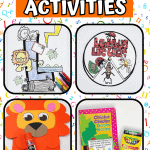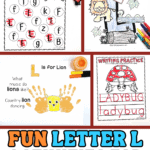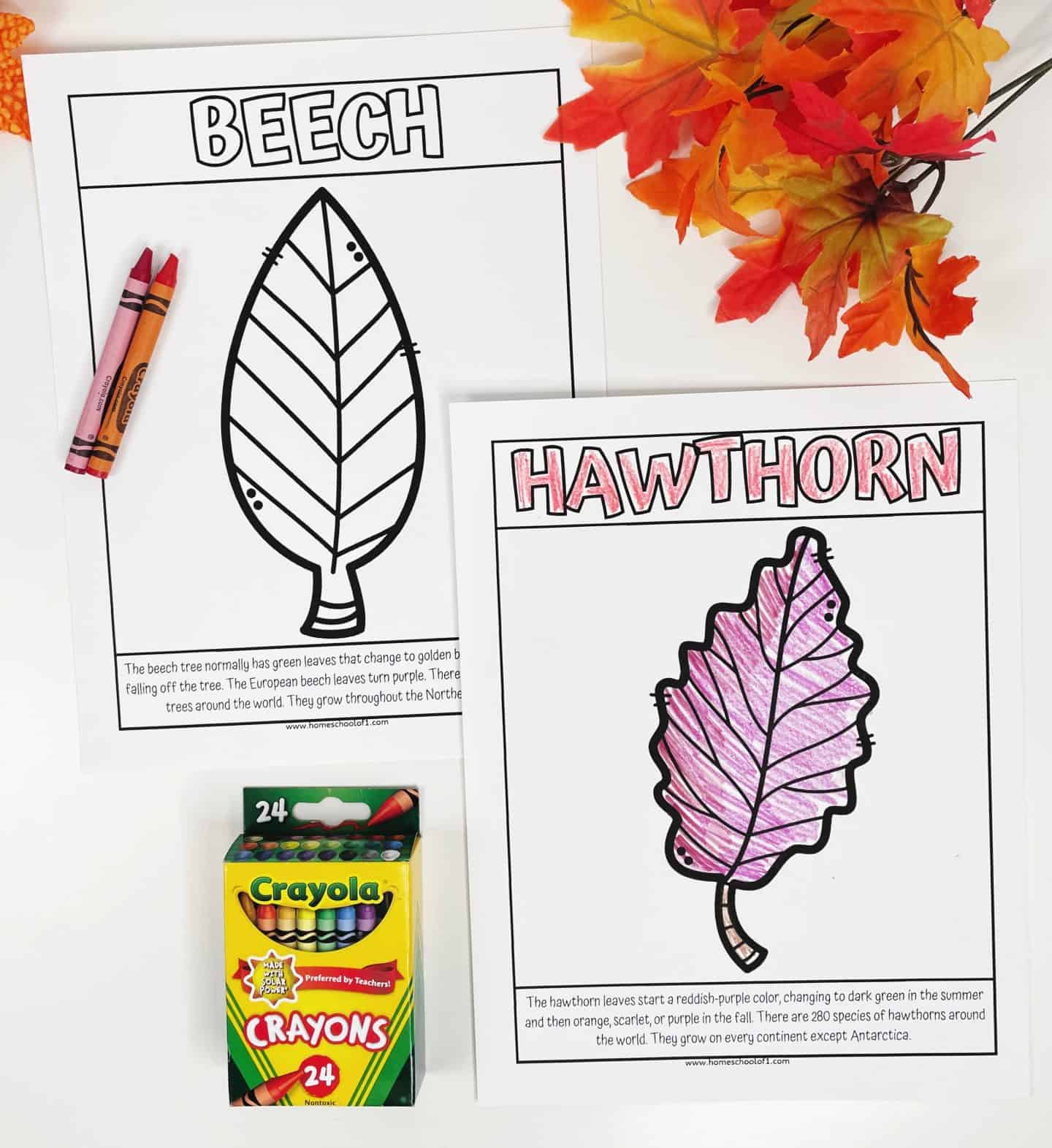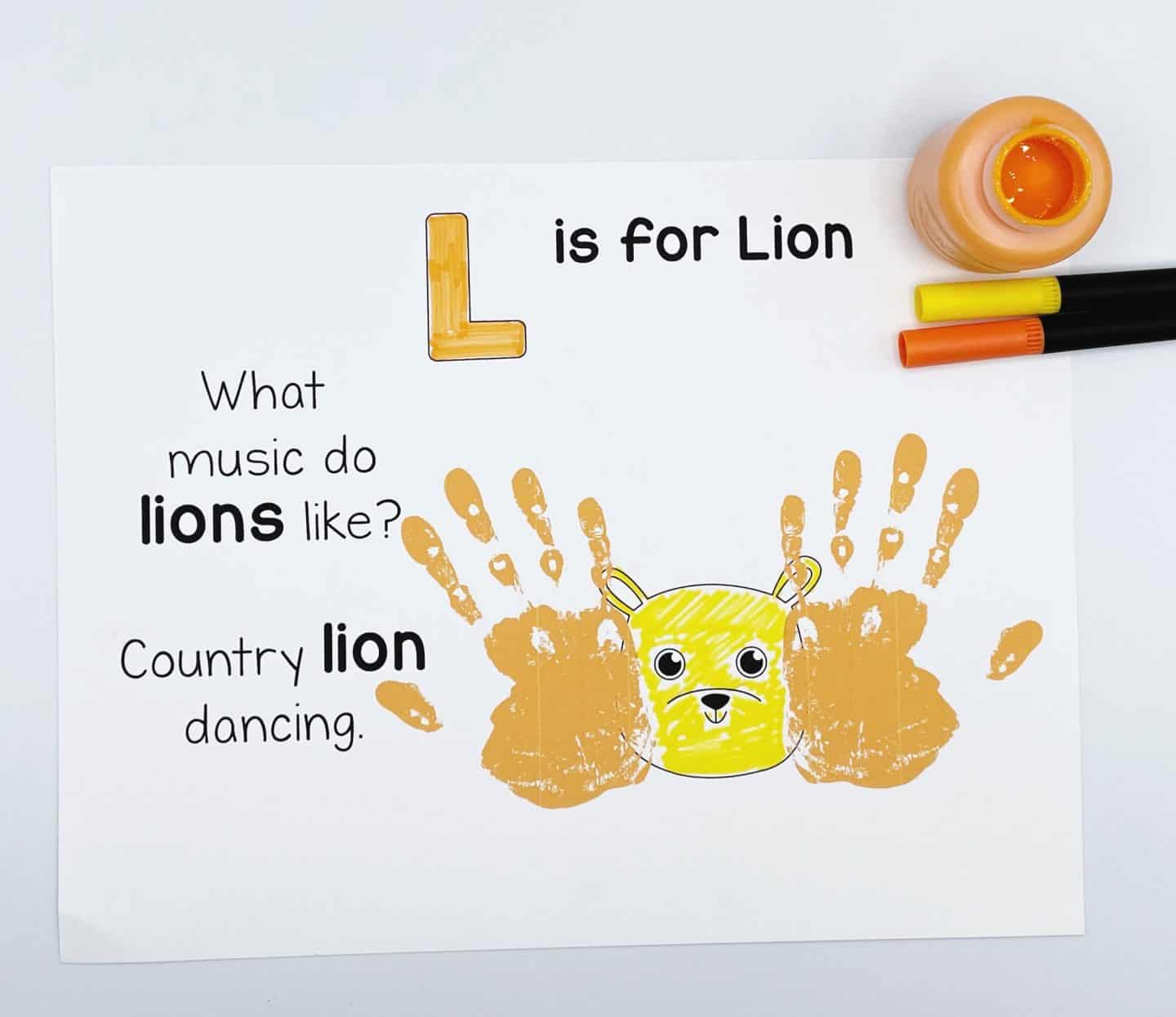Letter L Activities for Preschool – Fun & Easy Learning
Letter L activities are a fun way to help preschoolers build letter recognition while keeping learning hands-on and engaging.
From creative crafts to sensory play, these activities have been a big hit in our home, making the letter L easy to remember.
Mixing in free alphabet printables has added structure to our lessons, giving my little one plenty of opportunities to practice writing and identifying the letter L in different ways.

**This post may contain affiliate links. As an Amazon Associate and a participant in other affiliate programs, I earn a commission on qualifying purchases.**
Letter L Worksheets for Preschoolers
Make learning the letter L fun and interactive with a variety of engaging worksheets that support early literacy and fine motor skills.
These letter L activities help preschoolers recognize, trace, and explore the letter through coloring, crafts, and themed learning.
Letter L Coloring Page
Help your little one recognize and practice the letter L with a fun letter L coloring page.
Featuring familiar L-words like lions, lambs, and leaves, this activity encourages letter recognition while strengthening fine motor skills.
Kids will love adding bright colors to bring each picture to life!

Ladybug Worksheets
Incorporate letter L learning into a nature-inspired theme with ladybug worksheets. These activities introduce:
- Letter recognition through tracing and writing
- Counting and color matching with ladybug-themed exercises
- Early science concepts, like identifying a ladybug’s body parts
For extra learning fun, the free ladybug math worksheets make a great addition to these activities.
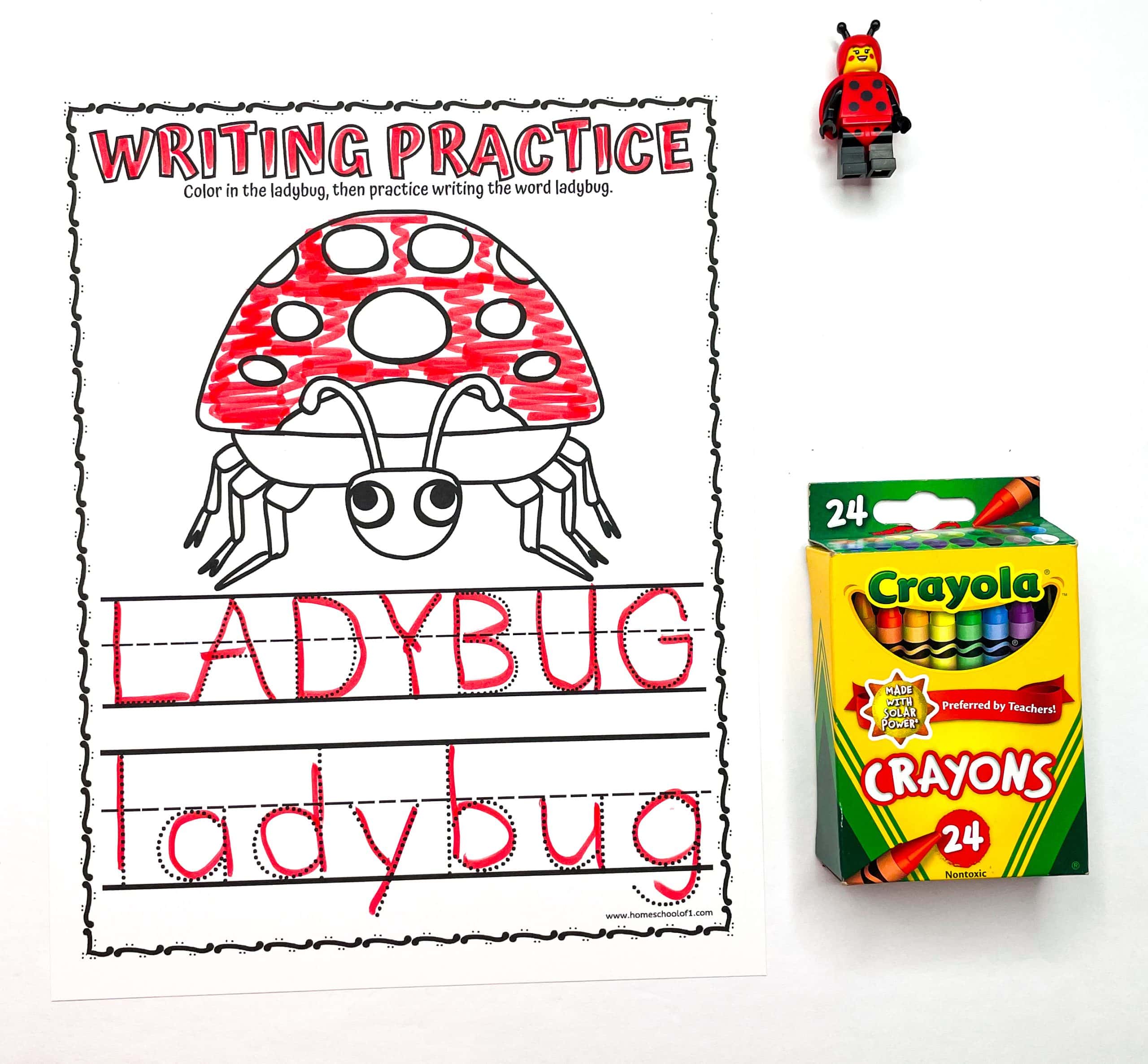
Ladybug Life Cycle Activity Sheets
Take learning even further with ladybug life cycle worksheets, where preschoolers explore metamorphosis while reinforcing the letter L.
They’ll label different stages, color illustrations, and practice early scientific vocabulary—all while naturally engaging with letter L words.
To add a creative touch, the ladybug life cycle coloring page provides a fun way for kids to visualize and remember each stage.
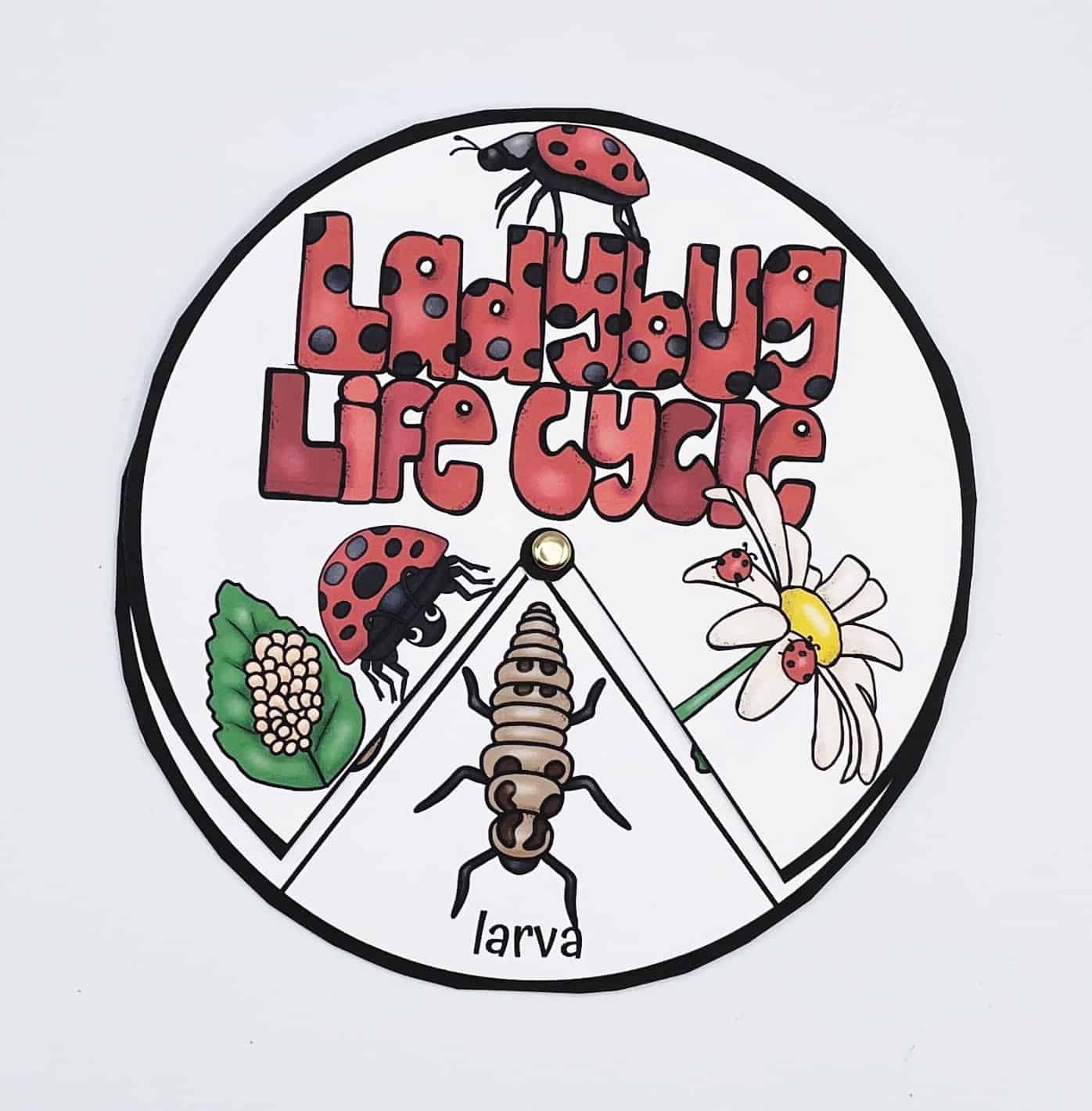
Leaf Coloring Pages
Leaves start with the letter L, making them a perfect theme for reinforcing letter recognition. Try having your child trace the letter L in leaf shapes before coloring!
Bring the letter L to life with leaf-themed worksheets! Preschoolers can color and explore different types of leaves while learning about colors, shapes, textures, and seasons.
This simple activity is a great way to connect literacy with nature.
Letter L Crafts for Preschoolers
Bring the letter L to life with fun, hands-on crafts that help preschoolers recognize, trace, and remember the letter while boosting creativity and fine motor skills.
- The L is for lion handprint art is a perfect way to combine art, sensory play, and letter recognition. Kids will love painting their hands to create a roaring lion while reinforcing their understanding of the letter L.
- The lemon sensory bin is another exciting way to explore the letter L through sensory play. Using lemons, water, and a splash of food coloring, preschoolers can scoop, pour, and explore textures while developing fine motor skills. This taste-safe activity is a refreshing way to make learning hands-on and engaging.
- A paper bag lion puppet turns a simple craft into a fun storytelling prop. Kids can practice scissor skills, gluing, and imaginative play while reinforcing the letter L. With a free printable template, it’s an easy way to create a playful learning experience.
- For an easy and engaging craft, a lion face mask made from a paper plate and strips of yellow and orange paper helps preschoolers strengthen fine motor skills while having fun pretending to be a lion.
These crafts make learning the letter L memorable and interactive, helping little learners connect the letter to real-world objects in a creative way.
How to Teach the Letter L to Preschoolers
Teaching the letter “L” can be a fun and engaging experience with hands-on activities that reinforce letter recognition and phonics skills. Here are some simple and effective ways to introduce the letter L:
Show and Say the Letter L
Begin by introducing both uppercase and lowercase L. Say the letter name and sound together (“L says llll, like lion”), and encourage your child to repeat it.
Find Words That Start with L
Help your child connect the sound to real objects by saying words like lion, ladder, and lamp. Play a game where they find things around the house that begin with L.
Hands-On Letter Formation
Make learning tactile! Let your child:
- Trace the letter L in sand, salt, or shaving cream
- Form the letter with playdough or pipe cleaners
- Shape their body into an “L” for a movement-based activity
Letter L Crafts and Coloring
Crafting is a great way to reinforce learning! Try:
- Making a paper plate lion mask
- Creating an L-shaped collage with cutouts of things that start with L
- Coloring letter L worksheets featuring lions, ladybugs, or leaves
Letter L Storytime
Reading books that highlight the letter L helps with recognition. As you read, point out L-words and encourage your child to repeat them. Some great options include:
Letter L Writing Practice
Use free alphabet printables to help your child practice writing uppercase and lowercase L. Start with finger tracing, then progress to pencil and paper for better fine motor development.
These hands-on alphabet activities make learning the letter L fun, interactive, and memorable—helping preschoolers develop strong phonics and letter recognition skills.
More Alphabet Activities
Continue building letter recognition skills with engaging activities for other letters of the alphabet.
These hands-on lessons complement letter L learning and help preschoolers make connections between different letters.
- Letter k activities – Explore crafts, worksheets, and fun learning games to reinforce the letter K.
- Letter m activities – Engage young learners with sensory activities, writing practice, and creative crafts focused on the letter M.
These alphabet activities make early literacy learning fun and interactive, giving kids plenty of opportunities to practice and grow their skills.
Last Updated on 9 April 2025 by Clare Brown

